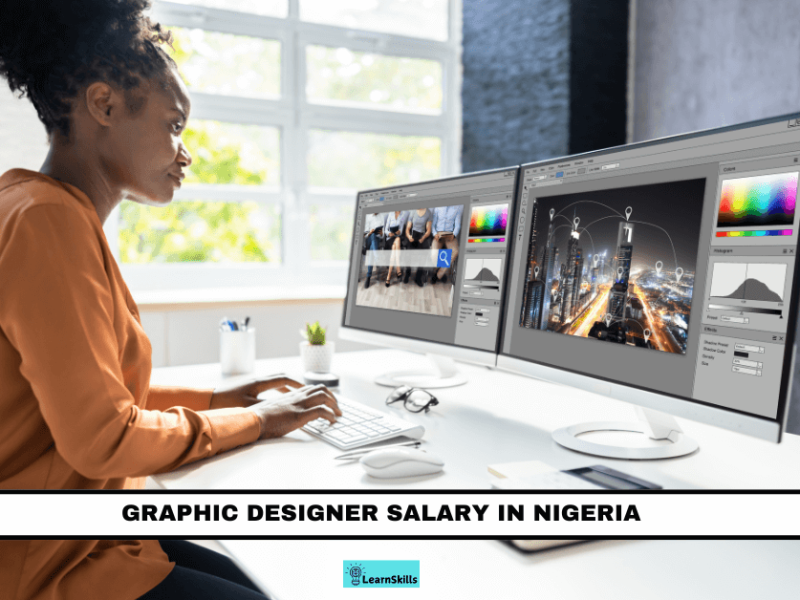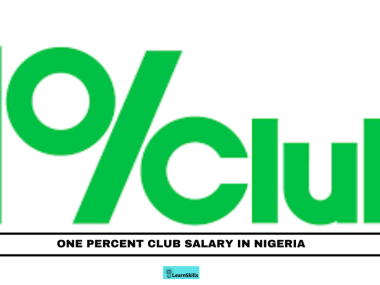In Nigeria, the estimated total pay for a graphic designer is NGN180,000 per month, with an average salary reported at NGN150,000.
Job opportunities for graphic designers in Nigeria are on the rise. Entry-level positions typically start at around NGN 52,000 monthly, while those with five years of experience can earn significantly more.
Understanding Graphic Design in Nigeria
Graphic design in Nigeria plays a crucial role in various industries, from advertising to digital media. As a graphic designer, you create visual content that communicates ideas effectively.
Your work often involves using specific software, mastering key design disciplines, and understanding various design aspects, such as typography and illustration.
The Role of Graphic Designers
As a graphic designer, your primary job is to convey messages through visual elements. You work with clients to understand their needs and create designs that align with their goals. This can range from logos and marketing materials to web design.
You also help build brands by creating cohesive visual identities. Your skills can significantly impact how a brand is perceived.
Additionally, you often collaborate with other professionals, like marketers and writers, to ensure that the visuals enhance the overall message.
Popular Design Software
In Nigeria, many graphic designers use industry-standard software. Adobe Creative Suite is popular, especially programs like Photoshop, Illustrator, and InDesign. These tools allow you to create stunning graphics, illustrations, and layouts.
Other software options include CorelDRAW and Canva. While CorelDRAW is widely used for vector illustrations, Canva offers a user-friendly platform for quick designs.
Key Design Disciplines
Graphic design encompasses various disciplines. Typography is a significant aspect, involving arranging type to make written language legible and appealing. Understanding fonts and spacing is essential for creating visually engaging content.
Illustration is another vital discipline that adds a unique touch to your designs. It involves creating original artwork, which can help convey complex ideas.
Combining these disciplines aids in creating effective visual communication that resonates with your audience.
Graphic Designer Salary Trends in Nigeria
Understanding the salary trends for graphic designers in Nigeria helps you see how pay varies based on experience, location, and employment type.
Entry-Level vs. Senior-Level Pay
As a graphic designer, your salary can differ depending on experience. Entry-level positions typically offer a monthly salary of around ₦52,442.
With more experience, a senior graphic designer can earn up to ₦121,795 monthly. This jump can result from advanced skills, a strong portfolio, or leadership roles.
Here’s a simple breakdown of expected salaries:
| Level | Average Monthly Salary (₦) |
|---|---|
| Entry-Level | 52,442 |
| Mid-Level | 85,000 |
| Senior-Level | 121,795 |
Freelance vs. In-House Salaries
Freelancers and in-house graphic designers often see different pay rates. Freelance graphic designers have more flexibility in setting their prices, ranging from ₦3,000 to ₦10,000 per hour. In contrast, in-house designers usually receive a consistent salary with benefits.
Freelance earnings can be unpredictably high or low, depending on client demand. Here’s how freelance rates generally look:
| Employment Type | Hourly Rate (₦) |
|---|---|
| Freelance | 3,000 – 10,000 |
| In-House | Fixed monthly salary |
Influence of Experience and Location
Experience plays a critical role in determining salary in Nigeria. Designers often earn more in bigger cities than in smaller towns due to higher demand. Additionally, designers with specialized skills or advanced software knowledge find better-paying opportunities.
Your location can also affect job availability and salary levels. Here’s a general comparison:
| City/Town | Salary Range (₦) |
|---|---|
| Lagos | 70,000 – 150,000 |
| Abuja | 60,000 – 140,000 |
| Smaller Towns | 40,000 – 90,000 |
Building a Successful Career
A successful career as a graphic designer in Nigeria requires a strong portfolio, effective networking, and a commitment to continuing education. These elements can help you stand out in a competitive market.
Developing a Strong Portfolio
Your portfolio is crucial in showcasing your skills and style. Aim to include a variety of work that highlights different techniques and projects.
- Diversity: Show various design types, including branding, web design, and print materials.
- Quality: Focus on including only your best work. This tells potential clients or employers about your capabilities.
- Presentation: Organize your portfolio neatly. Consider physical and digital formats; platforms like Behance can help display your work widely.
Keep your portfolio updated to reflect your latest projects and skills. A strong portfolio makes a lasting impression.
The Importance of Networking
Networking creates opportunities. Establish connections with other professionals, potential clients, and mentors in your field.
- Attend Events: Participate in design conferences or local meetups to meet people and share ideas.
- Social Media: Use platforms like LinkedIn and Instagram to showcase your work and connect with others in the industry.
- Collaboration: Working with other designers can open doors and provide new perspectives.
Networking is essential for growth and finding job opportunities. Building relationships can help you gain clients or learn about job openings.
Continuing Education and Skill Development
Staying competitive requires ongoing learning. The design field evolves quickly, you must keep your skills sharp.
- Online Courses: Platforms like Coursera and Udemy offer relevant courses for graphic design.
- Workshops: Join local or virtual training to learn new techniques and trends.
- Professional Certifications: Consider obtaining certifications that may enhance your credibility.
Investing time in education enhances your skills and demonstrates your commitment to the field. Regularly updating your knowledge helps you stay ahead in your career.
The Nigerian Job Market for Graphic Designers
The graphic design job market is growing in Nigeria, driven by increasing demand for creative and innovative design skills. Opportunities in various sectors are expanding, particularly in advertising and media.
Demand for Design Skills
The demand for design skills in Nigeria is on the rise. Companies across different industries are seeking graphic designers to enhance their branding efforts including creating logos, social media graphics, and marketing materials.
Key Skills Required:
- Proficiency in design software (e.g., Adobe Creative Suite)
- Strong visual communication abilities
- Understanding of branding and marketing strategies
As more businesses go digital, the need for engaging visuals grows, making graphic design a sought-after skill.
Opportunities in Advertising and Media
Advertising agencies in Nigeria are continually looking for talented graphic designers. These professionals are crucial in creating compelling campaigns that connect with audiences.
Key Areas of Work:
- Print and digital advertisements
- Social media content
- Motion graphics for video advertisements
With the hustle and bustle of the advertising sector, opportunities for designers to collaborate on diverse projects are many allowing for creativity and innovation.
Growth of Digital Design
Digital design is becoming increasingly important in Nigeria. The rise of e-commerce, social media, and online marketing has opened up new avenues for graphic designers.
Emerging Trends:
- Increased demand for website design
- Growth in motion graphics and animation
- Use of UX/UI design for better customer experiences
As businesses invest in their online presence, graphic designers who can adapt to digital trends will find ample job opportunities. Your ability to offer a mix of creative and technical skills will set you apart in this evolving market.
Navigating Online Job Searches
Your online safety is crucial when searching for graphic design jobs online. You want to avoid unusual traffic flags and protect your IP address. These steps will help ensure a safe and effective job search experience.
Avoiding Unusual Traffic Flags
Your activity can be monitored when browsing job sites. Websites may flag unusual traffic if they notice too many searches or requests.
To avoid this, consider the following tips:
- Vary Your Searches: Don’t repeatedly search for the same job. Change keywords or locations to keep your activity common.
- Limit Your Requests: Take breaks between searches. For example, wait a few minutes after viewing multiple listings before continuing.
- Use Different Devices: If possible, switch devices or networks to reduce the chances of being flagged.
Being mindful of your search patterns can help prevent being labeled as “not a robot” by job sites.
Safeguarding Your IP Address
Your IP address is unique and can reveal your location. Protecting it is essential for maintaining your privacy while job hunting.
Here are some effective methods to safeguard your IP:
- Use a VPN: A Virtual Private Network can hide your IP address. This makes your online activity less visible to websites and increases your privacy.
- Check Your Network Settings: Ensure your network is secure. Use strong passwords and updated software to prevent unauthorized access.
- Avoid Public Networks: Try not to search for jobs over public Wi-Fi. These networks are often not secure and can expose your IP address.










